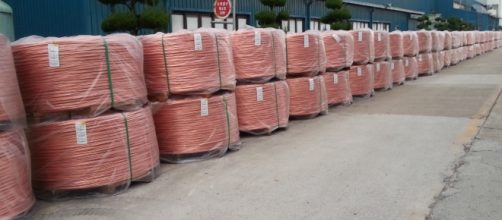The general impression is that Copper wires are flat and smooth. Touch and feel prove that too. However, in a new study, Scientists have discovered that copper, a previously thought to be a smooth metal which is also a great conductor of electricity, is not smooth.
Metals like copper are basically a gathering of bits called grains made of neatly aligned atoms. Individually, the grains are smooth. However, the places where these grains join together is not. Scientists called these as 'Grain Boundary defects'.
What copper looks like
A team of scientists observed minute nanocrystals using scanning tunneling microscopy and discovered that the copper films do not enjoy flat surfaces as believed earlier.
The surface was more similar to that of lifeless planets with peaks and dents and craters. These grain boundary defects can degrade the quality, life, and use of copper used for various purposes.
The study was published on 28th July, and Science News reported that scientists observed that for the first time, such a discovery has been made. The uneven surface of copper might result in significant delay and resistance in transmission of electricity through copper wires.
Electrons can run swiftly through smooth surfaces, but rugged surface might need the electrons to navigate their way, causing resistance. This would lead to wastage of electric power, generation of undesired heat and fast drainage in batteries
A significant discovery
The discovery of the actual look of copper films might seem insignificant.
However, it is a prominent discovery in that many electrical wires are made of copper, including nanowires.
A lot can be concluded from this study. These findings suggest that substances with similar properties to copper may share the same feature of uneven surface even if they look smooth.
The scientists also concluded that it is impossible to create flat two-dimensional nanocrystals of copper or similar metals. This conclusion, in turn, calls for action.
Answers
The discovery may look like a problem, but it actually opens doors for improvement. Scientists will now try to come up with possible solutions to make copper smooth. Forming alloys that can make copper better conductors may be one way.
Another way would be to mix copper with something that it can bond well with in order to over come the grain boundary defects.
The above study may open the door to the creation of materials that are better conductors of electricity.


